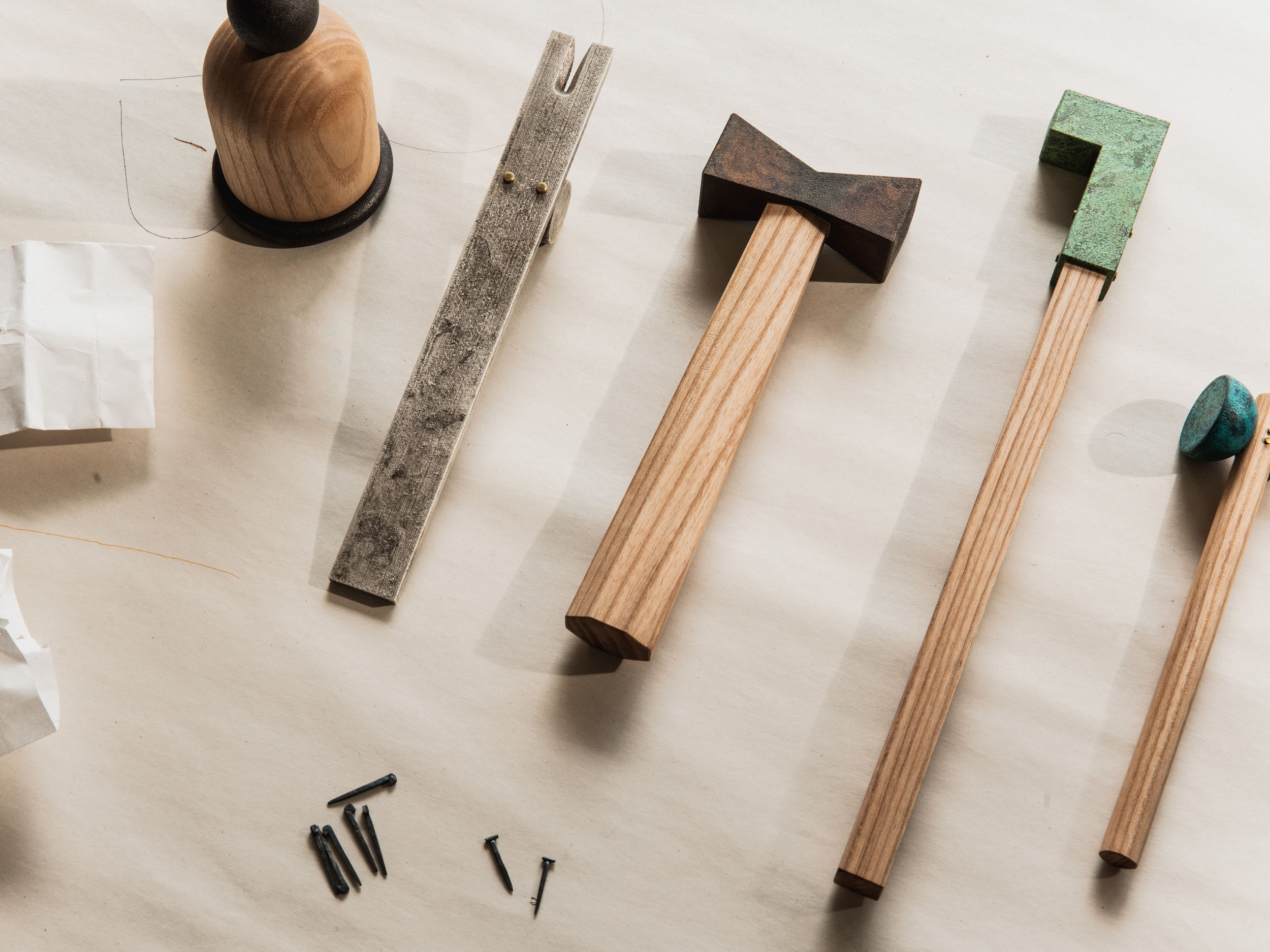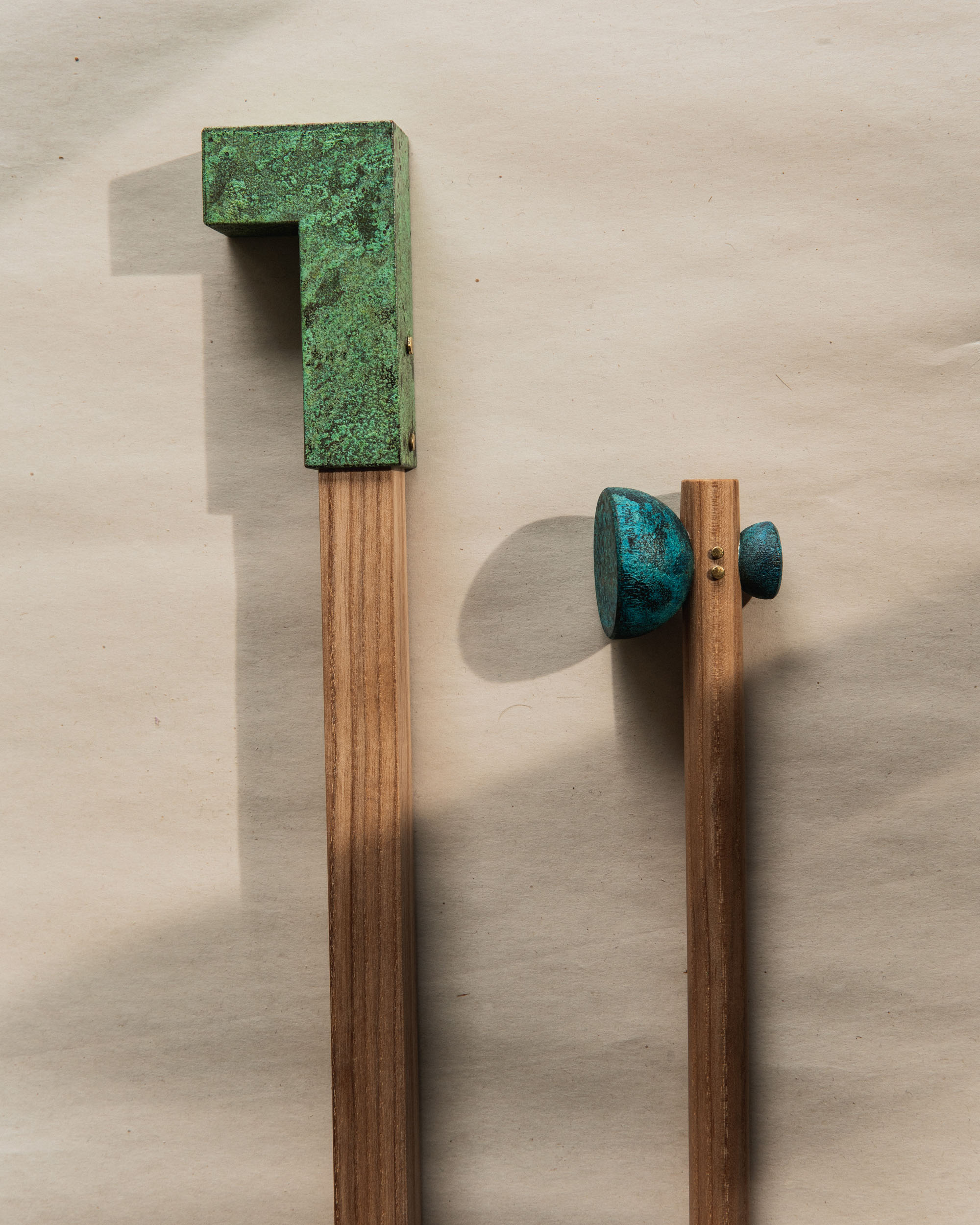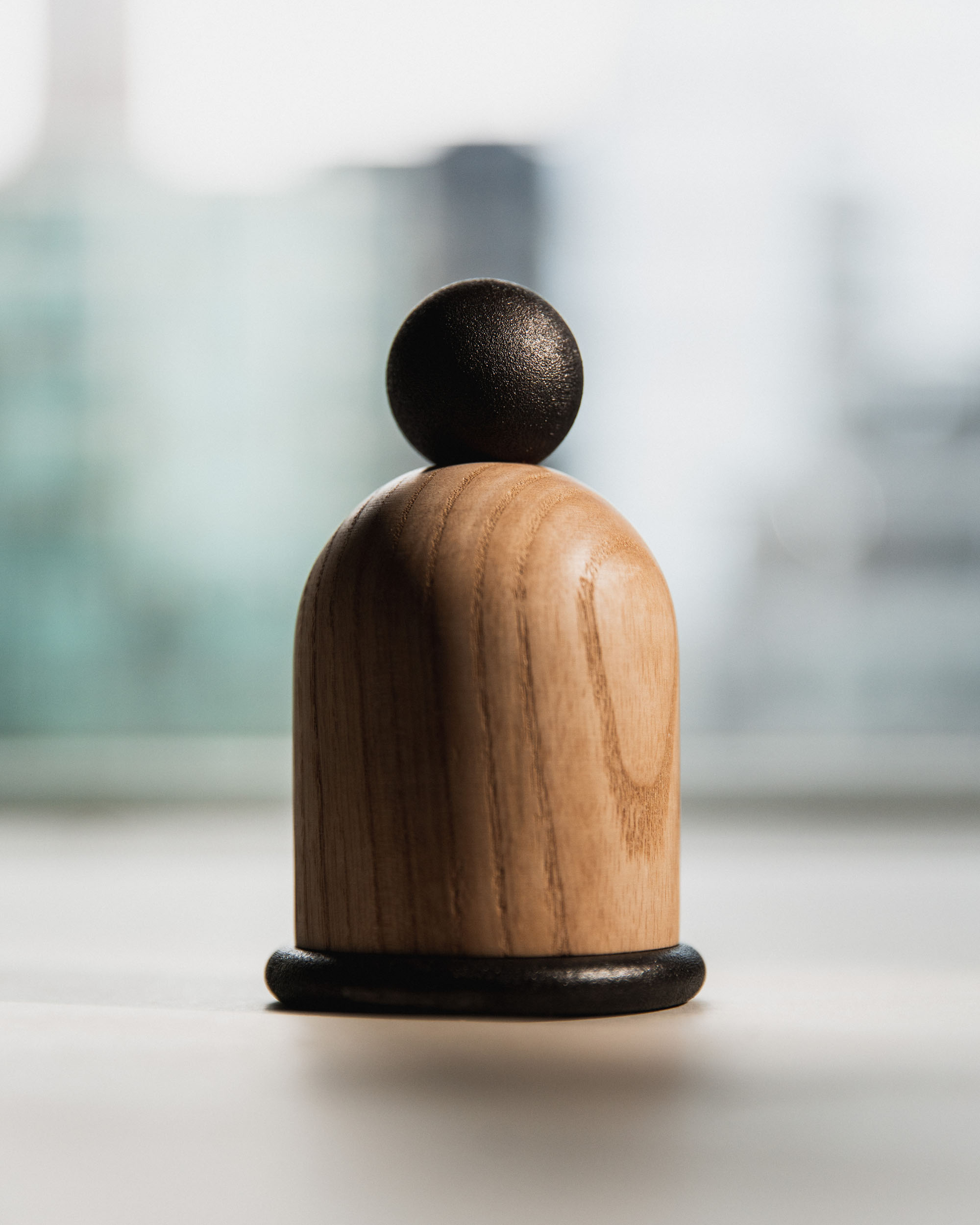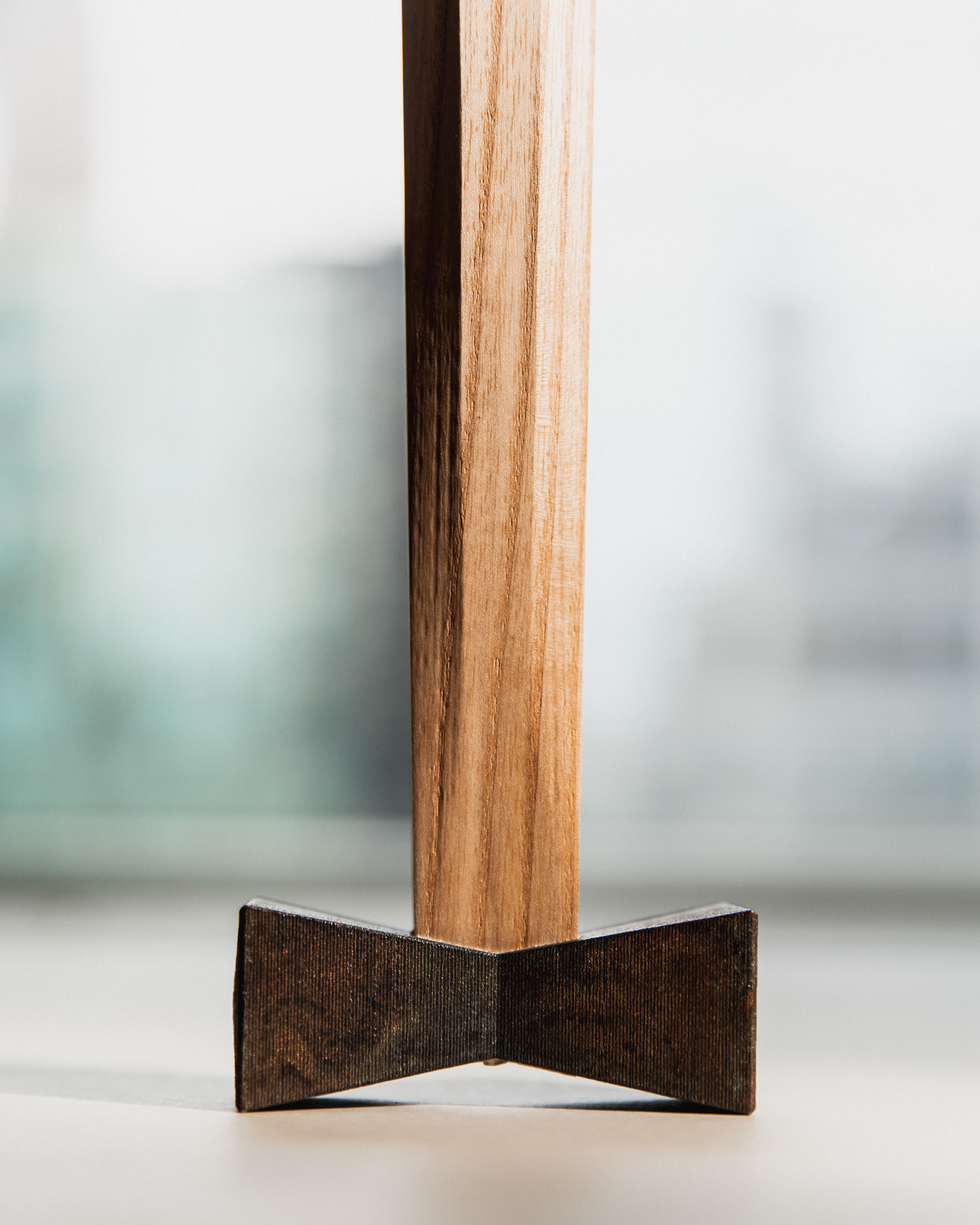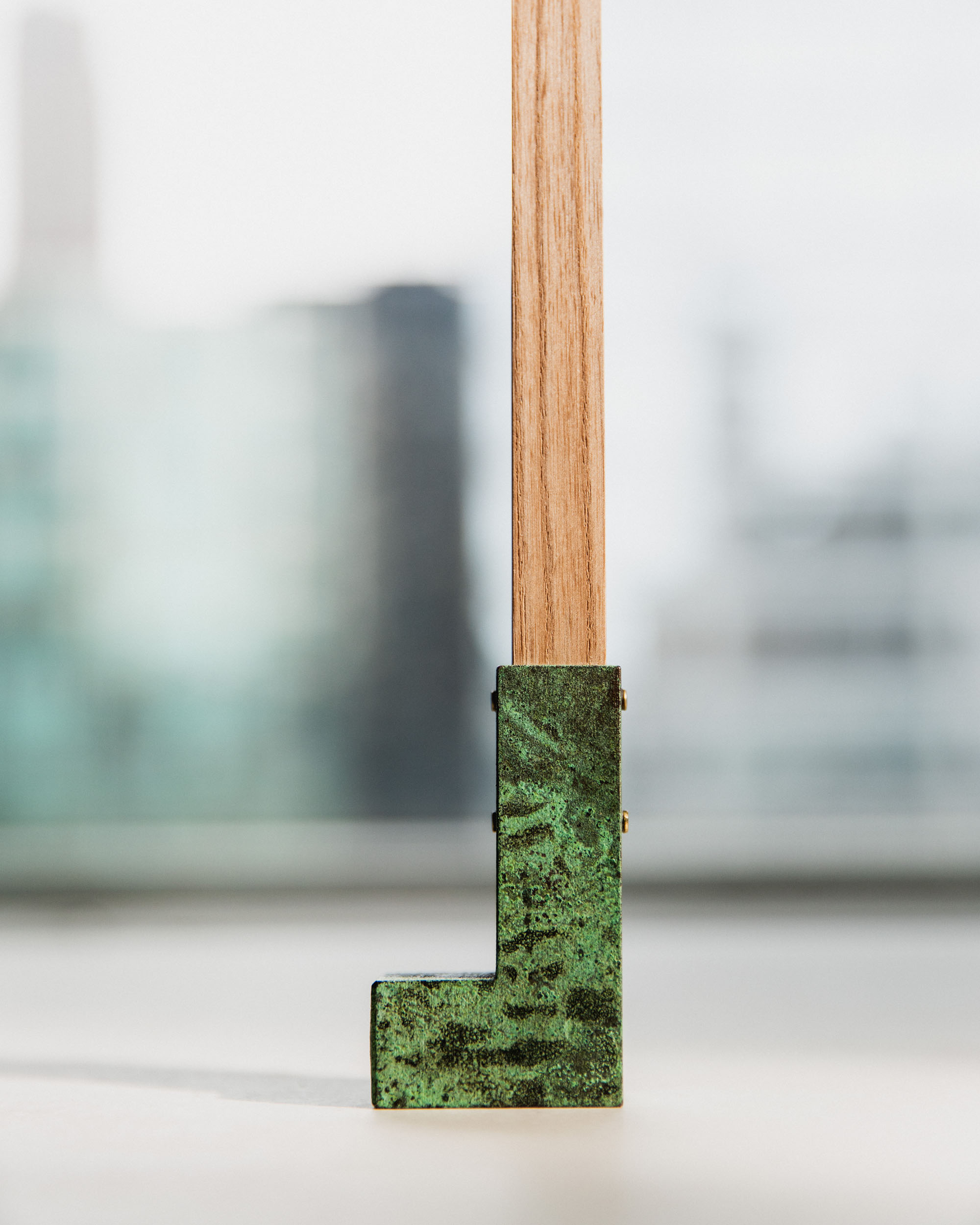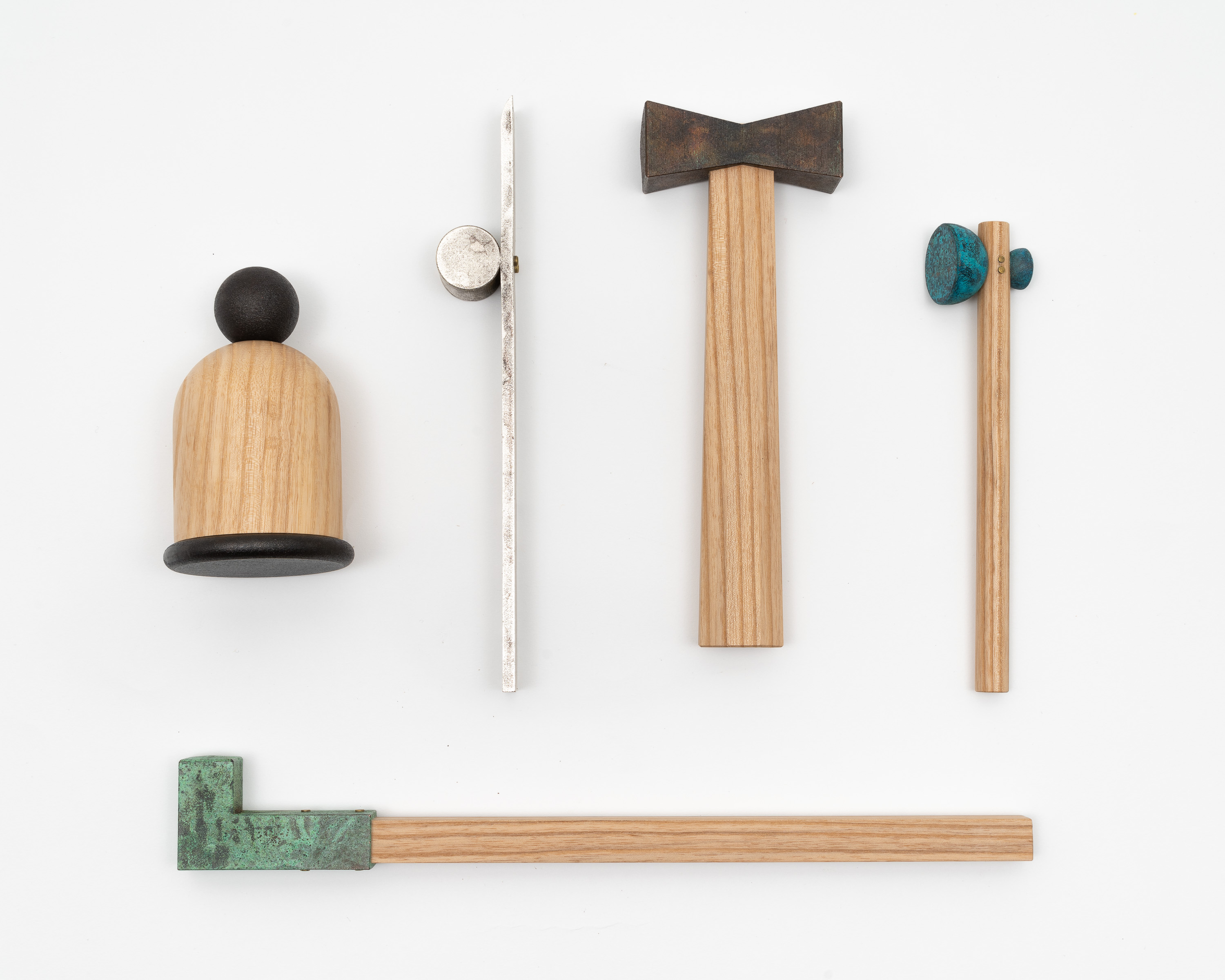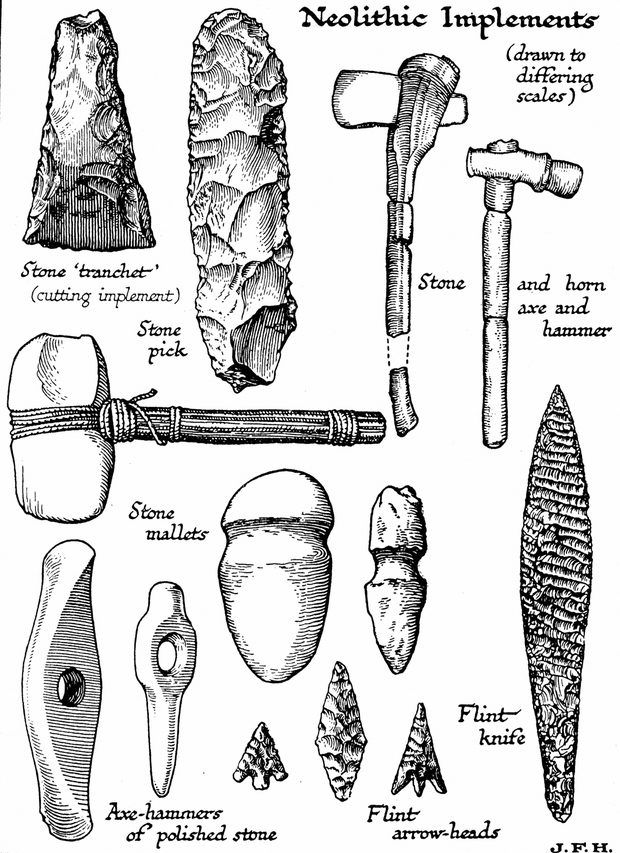| Name | Kazuki Guzmán |
| Class | MFA 2021 |
| Materials | Ash, brass, and steel |
| Dimensions | Kotsu-Kotsu: ⅞ x 1¾ x 11½ in / 22 x 44 x 292 mm |
The hammer is one of the most primitive and foundational tools humans have invented and it remains a common tool to date. The earliest hammers date back over 3 million years but since the introduction of the modern claw hammer, very little of the hammer’s form has been reconsidered.
This collection of hammers is a formal and phonetic interpretation of the hammer. The title for each derives from Japanese onomatopoeia which reveals the subtle, Japanese sensitivity to material properties. The hammerheads were 3D printed in steel and then patinated with traditional colors by master craftsmen in Kyoto, Japan.
In an age when so much is digital and automated, the utopia I envision advocates labor, time, and human qualities and embraces both the digital and the handmade.
 Whatnot Studio
Whatnot Studio
